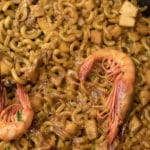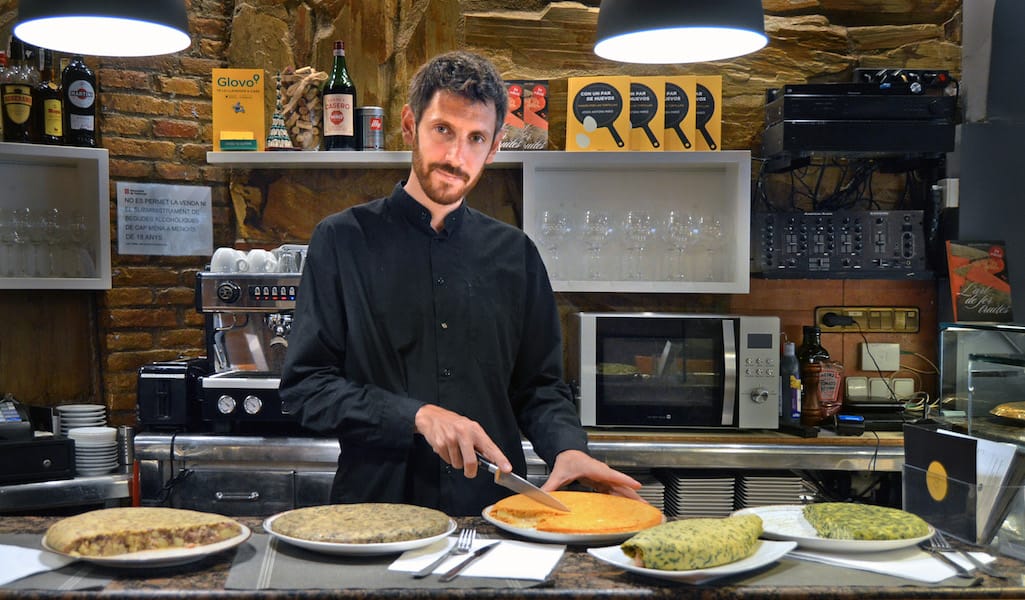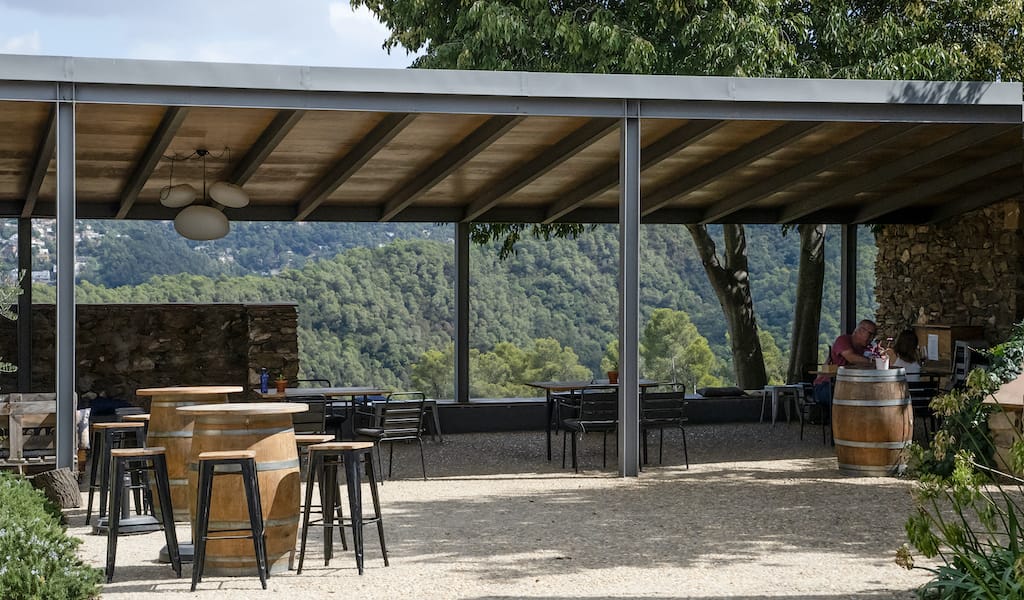Pulpo (octopus) is more than just a staple food in Galicia (the autonomous community in northwest Spain); it is an icon, a national symbol venerated by Galicians as well as Spaniards across the country.
In Galicia, this cephalopod is consumed at traditional village fairs, and is sold on weekends at street stalls. These stands are usually run by women called pulpeiras, who boil dozens of octopuses on portable stoves in large pots made of copper. The octopus is then served on wooden dishes with paprika and olive oil, or plopped into plastic bags with some of the cooking water to take home. In Galician, this is what we call pulpo á feira, “fair-style octopus,” a tapa that bars and restaurants try to imitate with varying degrees of success, and which is frequently confused with its sibling dish pulpo a la gallega, in which the octopus is served with cooked potatoes called cachelos.

In cities all over Spain, there are temples fully dedicated to the octopus culinary cult, specialized pulpo restaurants called pulperías. Pulpería A Gudiña, located in the Sant Antoni neighborhood, is one of those temples in Barcelona, a place where pulpo a la gallega is the most frequently ordered dish and at the heart of the restaurant’s origin story.
After years of other shared culinary endeavors, Galician Jose Luis Sierra and Andrés Flórez, from the León region, opened the restaurant in 1993. They named it after Sierra’s Galician hometown, a village called A Gudiña (back in the day, brigades of hospitality workers, cooks and waiters used to come from little rural villages in Galicia to work in Barcelona restaurants and hotels during the high season). Flórez and Sierra both started working in the restaurant industry at the age of 19, and met while working together in a bar in the center of Barcelona. For decades, the two worked and opened other eateries all over Barcelona that specialized in seafood and Galician recipes, until they decided to simplify their diverse restaurants and focus on one single project.

As Andrés tells us, “We wanted to open a pulpería with a counter in the middle of the room to boil and serve the octopus right there in between the tables. But it was very hard to find the right space for that.” As the first A Gudiña space was very small, with only one dining roon, they opened a second restaurant nearby. But after a couple years, the laundromat next to the first A Gudiña became available, and they took it over to create a second inner dining room, and closed the second restaurant. Sierra explains: “We were looking to work at our pace, and to make what we know and like to do.”
What they knew best was how to reproduce the magnificent tradition of the Galician pulpeiras. “At the beginning, we were cooking and cutting the octopus right there in the moment when the octopus came out of the pot, like the traditional pulpeiras in Galicia,” Sierra says. “But with the time and the higher number of tables and clients, it was impossible keep the rhythm and we had to change the cooking system, having some already cut in advance.”

Now, they boil octopus four times per day, cooking around ten of the creatures all together in a copper pot, as it is traditionally cooked in Galicia. Cooking a massive number of octopuses at one time flavors the water for a particularly tasty result. Octopus preparation is something of an art form, and different techniques are a common matter of debate in Galicia. Some might opt to “scare” the octopus (blanch it) three times before boiling. As Sierra explains, “The cooking time of the octopus is nothing exact; you have to check the octopus, [consider] how big it is, if it sits higher or lower in the pot; many factors. You have to pinch it to know when is in the right point. But if you cook them four or five times per day, you know the point by heart, and you don’t have even to pinch it!” The octopus is then served a la gallega – cut in slices with potatoes, in a wooden dish with paprika and olive oil, and available in three different sizes, form a little tapa to a big plate to be shared. You can also order octopus in salpicón (a kind of vinaigrette salad with onion, tomato and capsicums).

The rest of the menu, closely supervised by Sierra and Flórez in person, is based on small plates and tapas to taste and share, and has expanded to explore the diversity of traditional Galician Atlantic recipes beyond octopus, plus a few Mediterranean dishes like the grilled tallarinas (clams) or the cod esqueixada (desalted cod salad). They also serve other seafood such as grilled razor clams, cockles, mussels, oysters and velvet crabs.
Here you can also try some of the most classic Galician comfort food recipes, like a very succulent lacón con grelos (a pot dish of pork shoulder with turnip leaves, boiled potatos and chorizo); caldo Gallego (a soup of turnip leaves, potatos, beans, cabbage and chorizo – meat was traditionally used only by wealthier farmers, but is found in all current restaurant versions); or the simpler pork ear and Galician grilled T-bone steak. Many customers come to enjoy the hake eggs, a seasonal delicacy. A plate we also loved was their Galician surf and turf revoltillo of scrambled eggs with bitter grelos (turnip leaves), prawns and cuts of 100 percent acorn-fed Iberian ham. The extensive menu is best washed down with Pulperia A Gudiña’s house wine served in clay jars and the selection of their homemade digestifs, such as the coffee liqueur or a herbal concoction called the “Reanimator.”
Published on May 20, 2022
Related stories
April 1, 2022
BarcelonaAlthough it would seem that much of the world imagines the inhabitants of Spain subsisting largely on paella, the truth of the matter is that it is the tortilla de patatas (truita de patata in Catalan), also known as tortilla española in some Spanish regions, that really holds the place of honor in the hearts…
September 17, 2021
BarcelonaWhen perusing the menu at any traditional restaurant in Barcelona, one is sure to find a range of paellas and seafood plates. A closer look will also reveal the fideuá, its main ingredient left a mystery. Sometimes done up as fideos arrosejats in Catalonia, fideuá is actually a variation of the iconic seafood paella, but…
September 15, 2022
BarcelonaIt has been an endless summer in Barcelona. The temperatures are historically high and use of public air-conditioning historically low due to government-imposed energy saving measures. We are learning to live with what looks like a constant heat wave, where the best hours of the day start at night. The city is now recovering its…





















































































